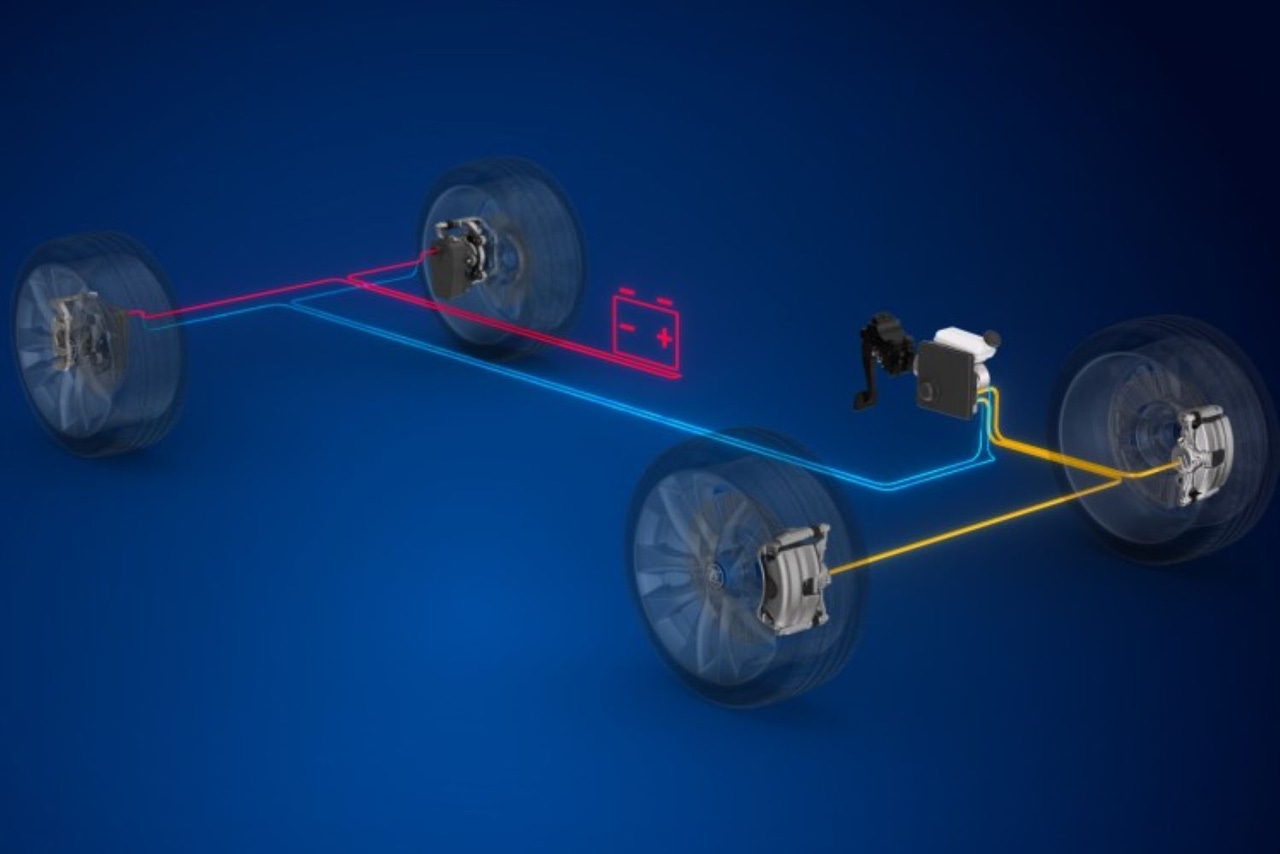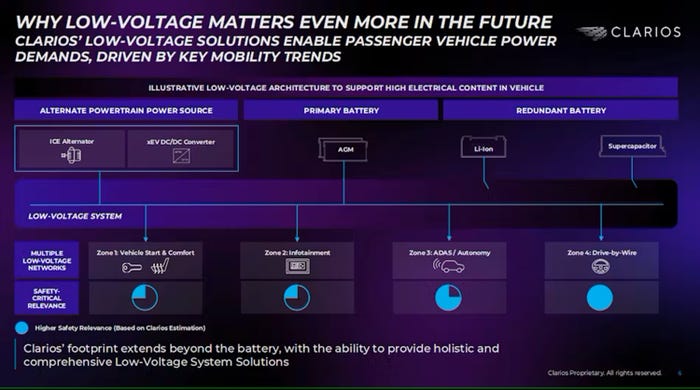CES 2025: Auto Suppliers Show Tech Built for EV DisruptionCES 2025: Auto Suppliers Show Tech Built for EV Disruption
From drunken-driving detection systems, to brake-by-wire and more powerful batteries, auto suppliers show off their best ideas and latest technologies aimed at a future of software and electrification.

ZF sells steer-by-wire for 5 Million Vehicles to OEM
ZF says it has sold its brake-by-wire technology to a major automaker for use in heavy-duty and super-duty trucks as well as Class 3, 4 and 5 trucks. The supplier is to equip 5 million vehicles, suggesting that the customer is Ford, General Motors or Stellantis based on the size/volume of the contract.
The deal, say executives, emphasizes the importance of ZF’s recently created Chassis Solutions Division.
The company also says it has sold its steer-by-wire tech to an automaker for a “single class of vehicle.”
ZF is competing for growing brake-by-wire business with Bosch and Brembo. Polestar, for example, works with Brembo. Rivian works with Bosch and Brembo. Tesla produces its own brake systems but works with suppliers for components.
Featuring ZF’s Electro-Mechanical Brake and by-wire technology on the rear brakes, the contract includes ZF’s Integrated Brake Control and traditional front calipers, creating a “hybrid” braking system of by-wire and hydraulics that offers increased flexibility to the manufacturer. The agreement will also provide significant steering technology with ZF’s Electric Recirculating Ball Steering Gear.
“We are all proud to see ZF’s technology leadership in the chassis segment providing tangible value for our customers. Our goal when combining our steering, braking, dampers and actuators as well as corresponding software businesses into a single division was to create the world’s most comprehensive chassis solutions product and system offering,” says Peter Holdmann, Board of Management member at ZF and head of Division Chassis Solutions.
Several factors have held back adoption of brake-by-wire. The technology replaces the direct mechanical or hydraulic link with electronics, leading to concerns about system failures or malfunctions. A failure in brake-by-wire systems could result in catastrophic consequences, so automakers and regulators demand highly redundant and reliable designs to ensure safety. And many drivers and regulators are cautious about relying on electronic systems for critical functions like braking.
Brake systems are highly regulated, and brake-by-wire systems must meet stringent safety standards. Gaining approval for such technologies can be a lengthy and expensive process. In the event of an accident involving brake-by-wire systems, automakers could face significant legal risks, especially if the system is seen as less reliable than traditional systems.
The volume of Tesla vehicles on the road, all of which have brake-by-wire, is giving automakers more confidence to adopt the technology.

Clarios Supercapacitors on Rise
Clarios, the world’s leading supplier of low-voltage batteries, says it is providing advanced 12V and 48V supercapacitors to automakers for release in new vehicles in the next few years. The technology assists with the electrified and software-defined vehicles that have growing demands for battery power to run an increasing number of electronic features.
Contracts for supercapacitors, says Federico Morales-Zimmermann, Clarios VP and general manager of global OEM customers, products and engineering, are going to be a significant source of new revenue for the company.
Clarios claims to already have products in one out of three vehicles in the road today, so they have deep relationships with automakers.
Morales-Zimmermann says the company is focused on staying flexible at a time when the industry is bucking and weaving as each automaker keeps adjusting its mix and product cadence of battery-electric, hybrid, plug-in hybrid and fuel-cell-electric vehicles.
“Being flexible to have, let’s say, a product portfolio. They can be applied to different propulsion architectures. They can be applied to different electronic architectures that can be equal. They can also scale, let’s say, into different areas where the customers are going to be.”
Supercapacitors are designed to store and distribute bursts of high power, which, for functions such as brake-by-wire and steer-by-wire, add minimal weight to vehicles. Weight management for both automakers and truck makers using the same technology is a key concern.
The supercapacitors work with absorbent glass mat batteries to provide stable power and redundant systems for safety.

Corraction runs demo at CES with subject whose alcohol level was above the legal limit
Corraction’s Drunken-Driving Detection Works Through Steering Wheel
CorrActions, an Israeli startup specializing in in-cabin cognitive neuro-monitoring, has developed NeuroMonitor, a software-based system designed to detect driver impairments, including those caused by alcohol consumption.
The unique aspect of the system is that it detects drunkenness/impairment through the hands via sensors in the steering wheel that are fed into an AI software system that informs whether the driver is too impaired to drive or is over the legal limit.
The company is backed by Volvo, Goodyear, Blackberry and venture capital.
NeuroMonitor evaluates the driver’s cognitive state by analyzing brain activity through micro-movements of muscles. These subtle movements are detected using existing in-vehicle sensors, such as those in the steering wheel or seat, eliminating the need for additional hardware.
The system continuously monitors for signs of impairment, including alcohol intoxication, fatigue and inattention, providing real-time assessments of the driver’s condition.
Utilizing artificial intelligence and machine learning, the system detects a range of blood-alcohol concentration levels with minimal false alerts, identifying impairment before physical symptoms become apparent.
The U.S. government is actively progressing toward mandating impaired driving prevention technology in all new vehicles. This initiative aims to reduce the significant number of fatalities caused by alcohol-impaired driving, which accounted for 30% of all traffic-related deaths in 2020.
It remains to be seen if the Trump Admin. will try to roll back that regulatory plan through legislation. The incoming administration has indicated it wants to roll back as many Biden Admin. initiatives that impose new regulations on business as it can.
Other auto suppliers are taking different approaches to the challenge.
Bosch, for example, has a system under development that monitors driver behavior for signs of impairment, such as erratic steering or delayed reactions, utilizing sensors, cameras and advanced algorithms.
Smart Eye uses in-car cameras to analyze eye gaze, head movements and facial expressions to detect signs of driver impairment, including distraction and drowsiness.
About the Author
You May Also Like

